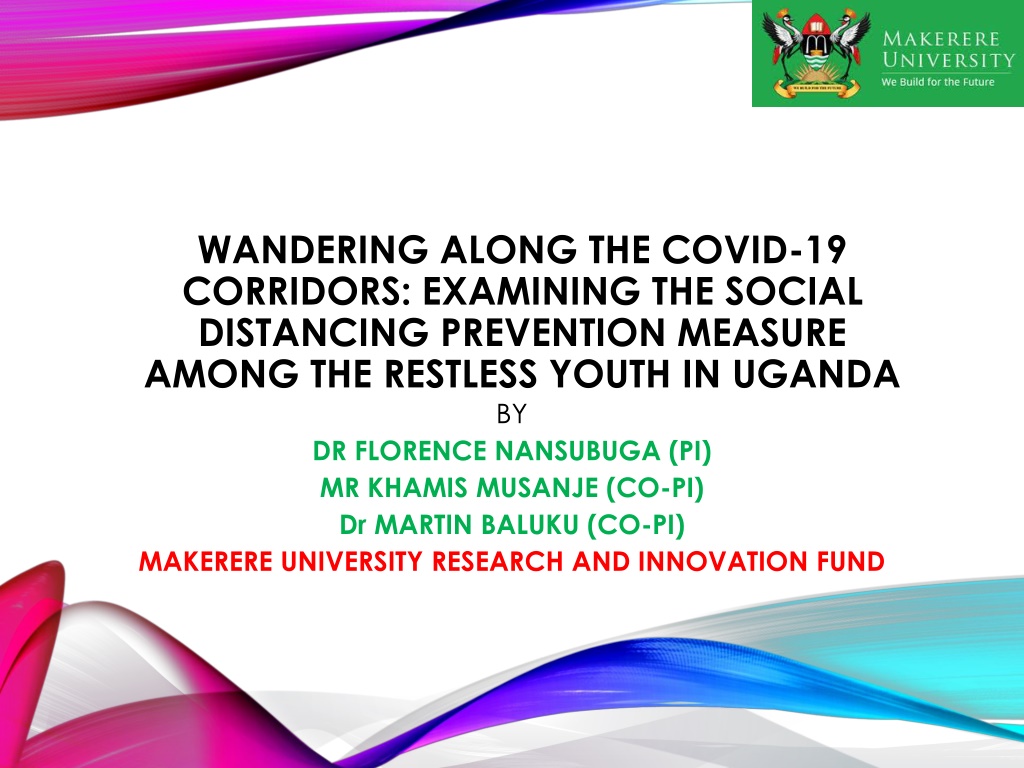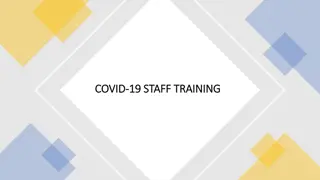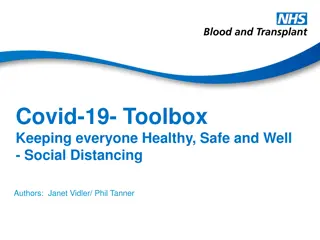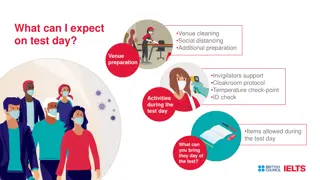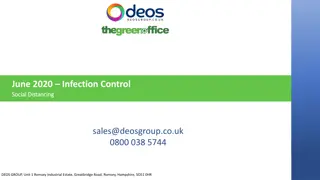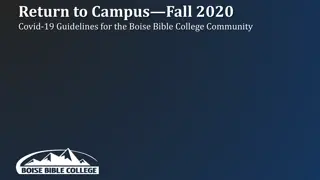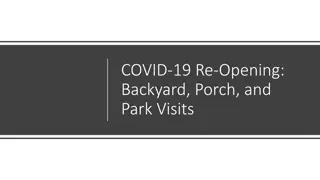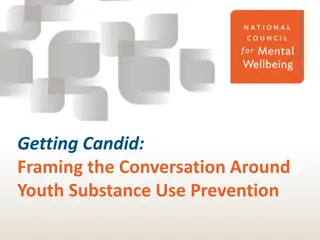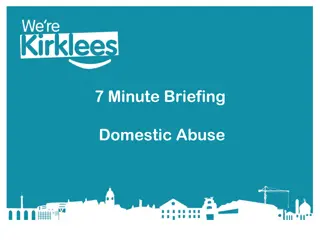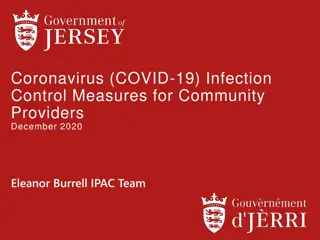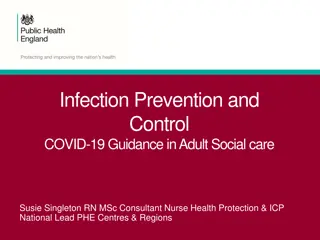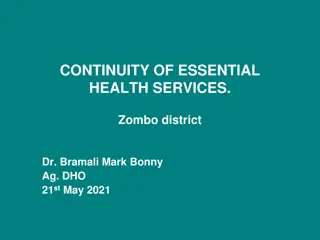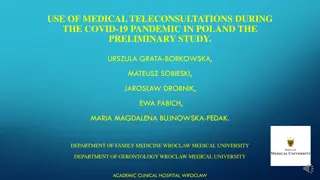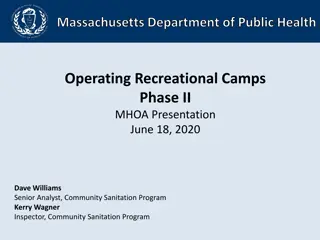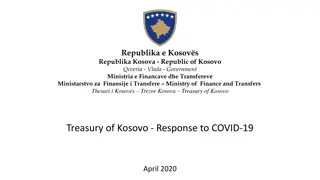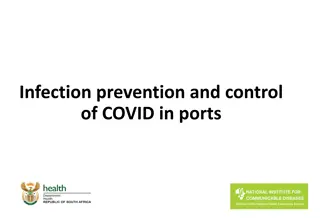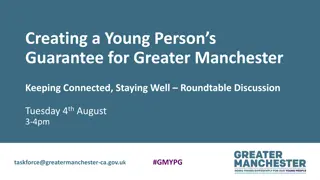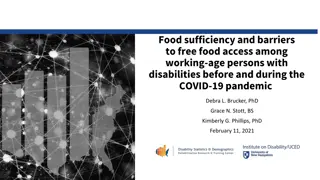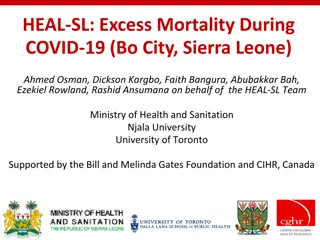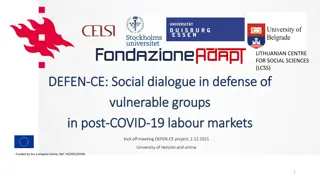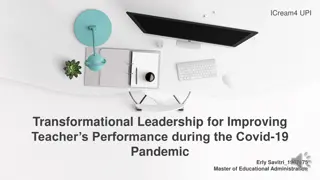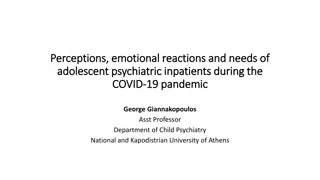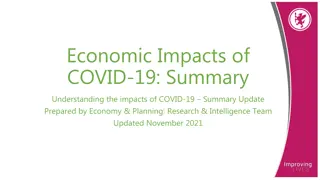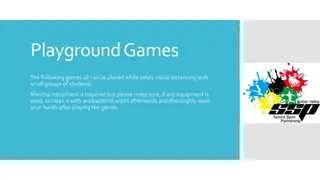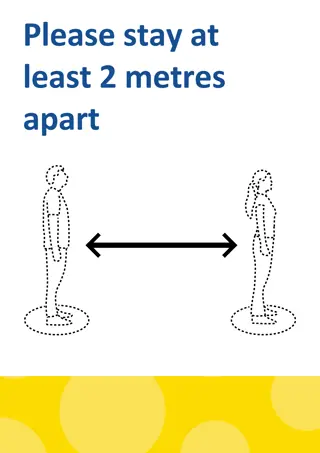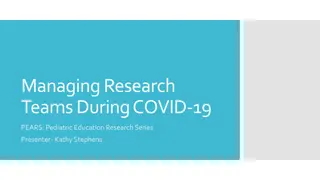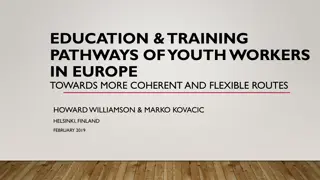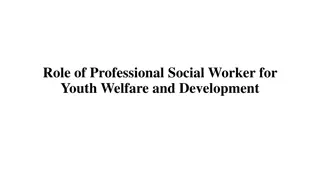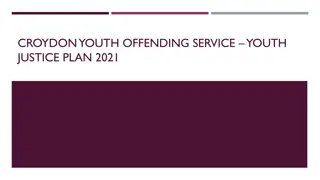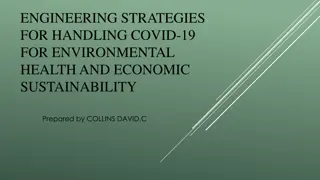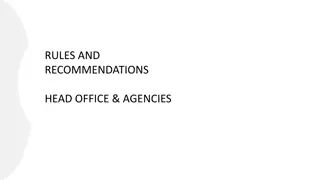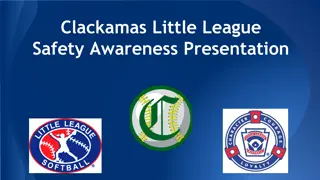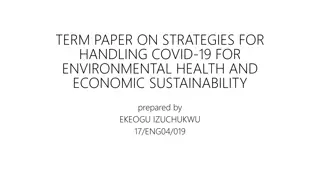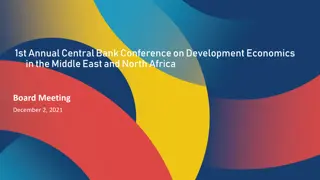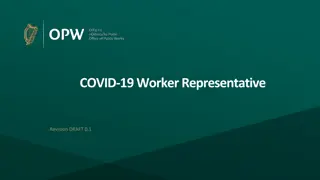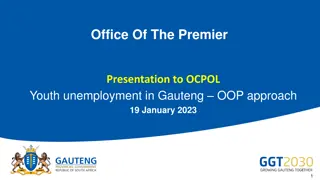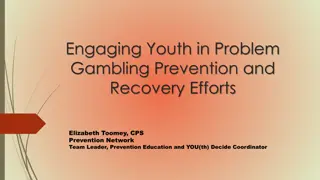Understanding Social Distancing Compliance Among Ugandan Youth During the COVID-19 Pandemic
Dr. Florence Nansubuga and team from Makerere University research social distancing compliance among Ugandan youth amidst the COVID-19 pandemic. The study examines the challenges faced in implementing preventive measures, highlighting the misconceptions and behavioral factors influencing the youth's adherence to social distancing guidelines. Statistical data underscores the need for investigating youth beliefs and societal influences to enhance compliance with public health recommendations.
Download Presentation

Please find below an Image/Link to download the presentation.
The content on the website is provided AS IS for your information and personal use only. It may not be sold, licensed, or shared on other websites without obtaining consent from the author. Download presentation by click this link. If you encounter any issues during the download, it is possible that the publisher has removed the file from their server.
E N D
Presentation Transcript
WANDERING ALONG THE COVID-19 CORRIDORS: EXAMINING THE SOCIAL DISTANCING PREVENTION MEASURE AMONG THE RESTLESS YOUTH IN UGANDA BY DR FLORENCE NANSUBUGA (PI) MR KHAMIS MUSANJE (CO-PI) Dr MARTIN BALUKU (CO-PI) MAKERERE UNIVERSITY RESEARCH AND INNOVATION FUND
INTRODUCTION COVID-19 is new pandemic that has spread worldwide without proved vaccine or cure. In order to delay the spread of the pandemic, WHO has issued COVID19 preventive measures which include, social distancing, hygiene (frequent hand washing & face masking), isolation and quarantine. This study specifically focuses on the aspect social distancing (i.e. stay at home, and/or keep 2 meters away from each other) guideline among the youth in Uganda. 2 MAKRIF 2020
STRUCTURE The presentation has been divided into the following sections; 1. Background 2. Problem 3. Objective 4. Conceptual and theoretical framework 5. Methodology 6. Findings. 7. Conclusion 8. Recommendations. 3 MAKRIF 2020
BACKGROUND Uganda adopted WHO guidelines to prevent the spread of COVID19 These guidelines are based on the Health belief model (HBM) The model assumes that people naturally oblige to the rules when they perceive a threat of the pandemic and believe in the effectiveness of the recommended behaviour People may not always respond as assumed due to the social and contextual factors that influence their habitual routines. The promoters of the model did not examine these contextual factors to understand the related dynamics. The controversial beliefs concerning practicing of the social distancing preventive measure have been observed among the youth. They believe that they are immune to the virus and that only the elderly are vulnerable (Emms, March, 2020). MAKRIF 2020 4
BACKGROUND Statistical data from USA evidenced that 12% of the COVID19 infected cases were young adults aged 20- 44 In China, a survey showed that 20% of hospitalized COVID19 cases were young adults aged 20-44 of which 2%-4% were in an intensive care unit (Sharon Begley, 2020) . By April 12th 2020, 53% of the infected cases in Uganda were young adults aged 20-39 It is evident that there is a need to investigate the youth s beliefs and social factors that influence their willingness to adopt the social distancing guideline. 5 MAKRIF 2020
PROBLEM The Corona virus is a widespread pandemic which requires concerted effort to mitigate its effects among the restless youth. With the partial closure of schools/universities workplaces, sports and social clubs, the youth have been left to wandering to seek for alternative social pleasantries that fit their routine lifestyles. Despite specific emphasis on the social distancing behaviour by the Ministry of health and other government agents, the youth have continued violating this guideline. With the misconception that young people are exorbitantly immune to the virus, the effects of COVID19 have remained a myth to the youth. This instigated a need to carry out a study that would investigate the circumstances that avert the youths from practicing the social distancing guideline 6 MAKRIF 2020
PURPOSE AND OBJECTIVES Purpose This study examined the theoretical gap within the Health Belief Model (HBM) and proposed a complementary model based on the social practice theory Objectives 1. To establish the level of knowledge and attitudes/beliefs of youths towards COVID19 pandemic. 2. To examine whether perceived susceptibility is linked to perceived benefits. 3. To investigate the causes of community complacency in relations to social distancing behaviour in the HBM. 4. To investigate whether community of practice has an effect on perceived barriers and social distancing behaviour in the HBM. 7 MAKRIF 2020
CONCEPTUAL FRAMEWORK MAKRIF 2020 8
THEORETICAL FRAMEWORK The HBM was first developed in 1950s by social psychologists; Rosenstock, Hochbaum, Kegeles, and Leventhal based at the U.S. Public Health Servicecenter (Carpenter, 2010; Karen, et al, 2008). The theory posits that adoption of health seeking behaviour is determined by beliefs about threats to one s well-being and the effectiveness of responsive actions (Sharma and Romas, 2012). It is based on the cognitive value-expectancy which assumes that behaviour is dependent on the subjective value, the individuals attaches on the outcome (Abraham and Sherman, 2015). In the context of COVID19, the perceived value of staying safe would be to keep social distance in order to avoid contagion (unwanted healthy outcome). MAKRIF 2020 9
THEORETICAL FRAMEWORK The HBM has been criticized for uplifting the individualistic approach of behaviour change while disregarding the social norms that govern human choices and their habitual routines (Jackson, 2005) Disregarding the social norms have instigated complacency among the youths. Community complacency is a feeling of satisfaction about the individuals situation in the community which prevents them from taking an action. Individualistic health interventions tend to create disruptions in social order and cultural norms thus fueling a desire to normalcy. The desire for normalcy, compounded with low perceptions of susceptibility will automatically result into complacency (Gonzalez-Block et al., 2020). MAKRIF 2020 10
THEORETICAL FRAMEWORK The Social Practice Theory provides an alternative explanation of human behaviour in regard to health and wellbeing issues (promoted by Bourdieu, 1990 and Giddens 1991). It recognizes the social and contextual practicalities of everyday life The theory suggests that before determining the preventive measures, the agent may need to examine the social interaction patterns that may affect the proposed practice/behaviour. The adoption of the social practice theory is an attempt to address the social gap in the HBM. 11 MAKRIF 2020
HYPOTHESES 1. Knowledge and attitudes about COVID19 significantly influences perceived susceptibility. 2. Knowledge and attitudes about COVID19 significantly influences both perceived benefits and perceived barriers. 3. Knowledge and attitudes about COVID19 significantly influences both community complacency. 4. Perceived susceptibility significantly influences perceived benefits, perceived barriers and community complacency 5. Perceived barrier mediates the relationship between perceived sustainability and community complacency. 6. Perceived barrier mediates the relationship between perceived sustainability and social distancing behaviour. 7. Community of practice mediates the relationship between perceived sustainability and perceived benefits. 8. Perceived benefit mediates the relationship between perceived sustainability and social distancing behaviour. MAKRIF 2020 12
METHODOLOGY Research design and sampling Exploratory was used to identify how participants rated their knowledge and attitudes towards COVID19, Causal-correlation was used to give an indication on how the independent variables influenced the dependent variables. The sample comprised of 298 youths aged 18-30 years from urban centers Kampala and Wakiso Districts. 52% were female, 88% had a bachelor s degree, 41% were employed, 25% owned businesses and 34% were unemployed. Participants were selected purposively based on age and location. 13 MAKRIF 2020
METHODOLOGY Instruments and data collection The constructs measured included; a. Individual s knowledge and beliefs about COVID-19 ( = .61); b. Perceived susceptibility ( = .85); c. Perceived benefits ( = .79); d. Perceived barriers ( = .87; e. Community complacency ( = .61); f. Community of practice ( = .89); and g. Social distancing behaviour ( = .90). These constructs were measured using an online questionnaire All items were assessed on a six-point scale ranging from 1 extremely untrue to 6 extremely true. The questionnaire was pretested and validated before the actual survey 14 MAKRIF 2020
METHODOLOGY Data analysis Data analysis will be done using SPSS and Amos. The preliminary process for statistical data, involved data entry, data cleaning and then analysis. Tested for reliability to establish Cronbach s alpha coefficients Tested for validity using maximum likelihoods to establish strong measures with factor loadings of .4 and above. Ran frequency tests to establish participants opinions on survey items. We also calculated correlations coefficients using structural equation models (SEM). MAKRIF 2020 15
FINDINGS MAKRIF 2020 16
KNOWLEDGE AND ATTITUDES OF YOUTHS TOWARDS COVID19 PANDEMIC FL ET% MT% EU% M SD Knowledge .73 8(3%) 26(9%) 264(89%) 2.86 .43 1. I truly understand the symptoms of COVID19 .77 .41 4(1%) 6(2%) 13(5%) 16(5%) 281(94%) 276 (93%) 2.93 2.90 .30 .35 2. I know how COVID19 is spread 3. I have learnt that many people have died of COVID19 Attitudes/beliefs .69 226(76%) 22(7%) 50(17%) 1.41 .76 4. I believe that young people like me can t contract coronavirus .89 256(86%) 14(5%) 28(9%) 1.23 .61 5. I believe that COVID 19 is a disease for white people .70 241(81%) 37(12%) 20(7%) 1.26 .57 5. I believe that COVID 19 is just a story made-up to threaten people * FL = factor loadings; ET% = percentage of extremely true; MT% = percentage of moderately true; EU% = percentage of extremely untrue. N=298 * % of Variance explained in EFA= 47% MAKRIF 2020 17
H1. KNOWLEDGE AND ATTITUDES TOWARDS COVID19 INFLUENCING PERCEIVED SUSCEPTIBILITY (PS) Knowledge about COVID19 Perceived susceptibility r = .38, p < .01) Attitude towards COVID19 Perceived susceptibility r = .02, p >.05) Implications It is only when the youths are knowledgeable that they can perceive susceptibility Attitude towards COVID19 has no connection with perceived susceptibility 18 MAKRIF 2020
H2. KNOWLEDGE AND ATTITUDES TOWARDS COVID19 INFLUENCING BOTH PERCEIVED BENEFITS AND PERCEIVED BARRIERS Knowledge about COVID19 Perceived benefit Attitude towards COVID19 Perceived benefit Knowledge about COVID19 Perceived barrier Attitude towards COVID19 Perceived barrier Implications Youth who are knowledgeable will greatly perceive social distancing as benefit The youth s attitude determines their perception of social distancing as benefit but the significance level of influence is weak Knowledge about COVID19 has no connection with perceived barrier The youth s attitude determines their perception of social distancing as benefit. E.g. If one believes that covid19 is a story, he/she is likely to perceive social distancing as a barrier. r = .45, p < .01) r = .12, p < .05) r = .03, p > .05) r = 26, p < .01) MAKRIF 2020 19
H3. KNOWLEDGE AND ATTITUDES TOWARDS COVID19 INFLUENCING COMMUNITY COMPLACENCY Knowledge about COVID19 Community complacency r = .07, p > .05) Attitude towards COVID19 Community complacency r = .51 p < .01) Implications Knowledge about COVID19 has no connection with community complacency. When the youths beliefs about COVID19 are positive, complacency will reduce. When the youths attitude is negative (not scared of COVID19), complacency among them is likely to increase. MAKRIF 2020 20
H4: PERCEIVED SUSCEPTIBILITY INFLUENCES PERCEIVED BENEFITS, PERCEIVED BARRIERS AND COMMUNITY COMPLACENCY Perceived susceptibility Perceived benefit Perceived susceptibility Perceived barrier Perceived susceptibility Perceived Complacency r = -.22, p < .01) r = .71, p < .01) r = .21, p < .01) Implications Youth who perceive themselves as susceptible will perceive social distancing as either benefit or a barrier. The probability of perceiving it as a benefit is stronger compared to the probability of perceiving it as a barrier Low levels of perceived susceptibility will result into high levels of perceived complacency. MAKRIF 2020 21
H5: PBA AS A MEDIATOR OF PS AND CC (MODEL 1 DV IV/MV B S.E. X df /df GFI TLI NFI CFI RMSEA PBA <-- PS .38*** .08 .29*** 65.07 28 1.74 .96 .93 .93 .96 .067 CC <-- PS -.51*** .09 -.33*** CC <-- PBA .36*** .06 .30*** Findings Direct path Increase in PS creates reduction in CC Indirect path - PBA mediates the negative relationship between PS & CC completely and transforms the negative correlation into a positive one. Implication If the youths perceive barriers as a result of feelings of susceptibility, complacency towards the prevention behaviours(e.g. social distancing is likely to increase). 22 MAKRIF 2020
H6: CP AS A MEDIATOR OF PS AND PBE (MODEL 2 DV IV/MV B S.E. X df /df GFI TLI NFI CFI RMSEA CP <--- PS .57*** .12 .33*** 62.95 28 2.25 .96 .95 .94 .97 .065 PBE <--- PS .52*** .07 .55*** PBE <--- CP .08*** .03 .15*** Findings Direct path Increase in PS creates increase in PBE Indirect path - CP mediates the relationship between PS & PBE partially Implication If the youths perceive benefits as a result of community of practice, they will accept practicing the prevention behaviours (e.g. social distancing is likely to increase). 23 MAKRIF 2020
H7: PBE AS A MEDIATOR OF PS AND SDB (MODEL 2 DV IV/MV B S.E. X df /df GFI TLI NFI CFI RMSEA SDB <--- PS .56*** .10 .48*** 62.95 28 2.25 .96 .95 .94 .97 .065 PBE <--- PS .52*** .07 .55*** SDB <--- PBE .19** .08 .15** Findings Direct path Increase in PS creates increase in SDB Indirect path - PBE partially mediates the relationship between PS & SDB Implication If the youths perceive social distancing as related to benefits, they will continue practicing it. 24 MAKRIF 2020
H8: CP AS A MEDIATOR OF PS AND PBA (MODEL 3) DV IV/MV B S.E. X df /df GFI TLI NFI CFI RMSEA .14* PBA <--- PS .07 .14* 74.49 28 2.66 .95 .91 .91 .91 .075 CP <--- PS. .55*** .09 .37*** PBA <--- CP .12*** .04 .17*** Findings Direct path Increase in PS creates increase in PBA Indirect path - CP mediates the relationship between PS & PBA partially Implication Reducing perception of barriers requires introducing community of practice as an intervention Reduction in perceived barriers will also results into reduction in community complacency MAKRIF 2020 25
CONCLUSIONS The youths attitude is the major source of complacent towards the social distancing behaviour. Among the youths, social distancing behaviour have been perceived more as a barrier rather than a benefit. Information about COVID19 pandemic has ignored the social practices, values and routine habits that influence the expected behaviour in the community. Failure to acknowledge the social practices and values have imposed constraints/barriers to the implementation of COVID19 prevention measures MAKRIF 2020 26
RECOMMENDATIONS TO THE HEALTH AGENTS COVID19 related health hazards should be built on coherent information and backed up with practical context-based solutions to enable youths evaluate health risks and observe social distancing as benefits. The application of community of practice to examine youths opinions would make it easier to transform their health seeking behaviours. 27 MAKRIF 2020
RECOMMENDATIONS TO THE HEALTH AGENTS Transformation of behaviour should involve the community, to brainstorm actions and scientific processes that are compatible with human habitual routines. Health professionals should collaborate with community agents to educate the public while clarifying the myths about COVID19 and its effects. Need for resources to build capacity of health partners in the community and to enable them carry out COVID19 related activities intensively. MAKRIF 2020 28
29 THANK YOU FOR LISTENING TIME FOR QUESTIONS MAKRIF 2020
